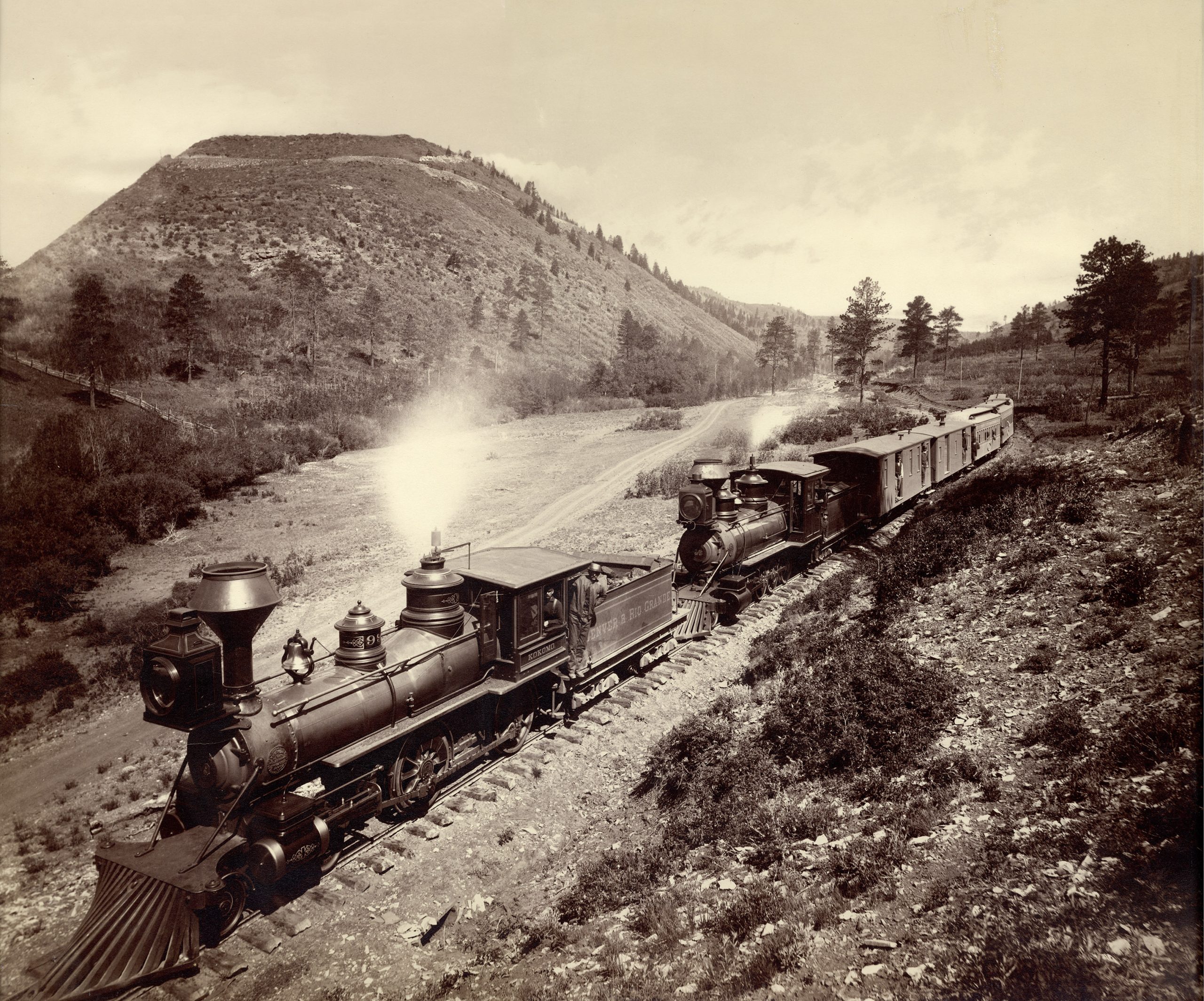
The underlying myths of the so-called “Wild West” may be suspect at best, but the natural grandeur of its backdrop is without question. That much is clear at the new Longmont Museum gallery show, Picturing the West: Masterworks of American Landscape Photography, a journey through the lens of those who first captured its landscapes on camera.
From the renowned to the rediscovered, the installation features nearly 50 images by 13 photographers working in the mid-to-late 19th century. Arriving in Boulder County via the New York-based traveling exhibitions company art2art, these images do more than document. Each one is also a piece of art, capturing the majestic landscapes of the West with clarity and depth.
“Picturing the West shows the evolution of photography,” says Jared Thompson, exhibition curator at the museum. “It was still a new medium at the time, and this installation highlights photography as an artistic expression rather than just a documenting process.”
At the heart of the gallery are mammoth-plate photographs by big names like Carleton Watkins, William Henry Jackson and Eadweard Muybridge. These photographers embarked on arduous journeys into the heart of treacherous landscapes, carrying massive cameras and a determination to document the sublime beauty they encountered.
“This was before they had enlargers, so every print you see is the size of the negative,” Thompson explains. “They had giant cameras because there was no blowing it up afterward. There wasn’t any infrastructure in any of these areas back then, so they would have to truck all their equipment on mules or wagons. This included the cameras, tripods, heavy glass plates for the negatives and then all the chemicals you need to create and develop the negatives.”
The process was labor-intensive, demanding both technical skill and artistic vision. Photographers would coat glass plates with collodion, then go into a makeshift darkroom at the site of their photograph and dip the plate into the silver nitrate solution. Next, while the plate was still wet, they would place it into a light-proof holder, put it in the camera, remove the sleeve and expose the plate for no more than 15 minutes to ensure the emulsion wouldn’t dry.
They would then develop, fix and varnish the photograph with shellac heated by candlelight to protect the glass against scratches. Finally, they would carefully transport the glass plate back to their studios.
“One of William Henry Jackson’s mules actually slipped and fell off a cliff, so he lost a month of work,” Thompson says. “Their dedication to the craft was just insane. It cost $200 per negative in today’s dollars, so they had to be incredibly skilled. Being a photographer requires you to have both a left and right brain — the left to figure out all the logistics, and the right to frame the composition.”
‘Reframing the West’
Along with images from well-known white male photographers, the Longmont Museum’s ongoing exhibition includes rarely seen works by women and people of color from the 19th century.
“People had voiced concerns that [Picturing the West] wasn’t super representative or inclusive, so we wanted to expand that,” Thompson says. “We added another exhibition called Reframing the West inside the gallery that includes people of color and female photographers from about two decades later.”
In curating Reframing the West, Thompson worked closely with museum assistant Jasmine Dinnell. They delved into extensive research, identifying photographers whose contributions to the art form had been historically overlooked. It includes works by Evelyn Jephson Cameron, Jennie Ross Cobb, Lora Webb Nichols and Richard Throssel, who provide intimate and human-centric views of the West.
Beyond the photographs, visitors can view period cameras from the collections of the Longmont Museum, Broomfield Depot Museum and History Colorado. The exhibition also boasts a rich program of additional events, including concerts, talks and film screenings, designed to complement and enhance the themes explored in Picturing the West.
As the Longmont Museum continues to expand its vision and space with a capital campaign and physical expansion underway, Picturing the West offers a glimpse into its innovative approach to storytelling. It’s not just about seeing the photographs; it’s about experiencing the West’s vast landscapes and intricate histories through a broader, more inclusive lens.
“These photos are from a long time ago, but there are still modern threads running through them, particularly in the Reframing the West exhibition,” Thompson says. “It may have been decades ago, but we’re still people with similar interests.”
ON VIEW: Picturing the West: Masterworks of American Landscape Photography. Through May 5, Longmont Museum, 400 Quail Road, Longmont. Free
